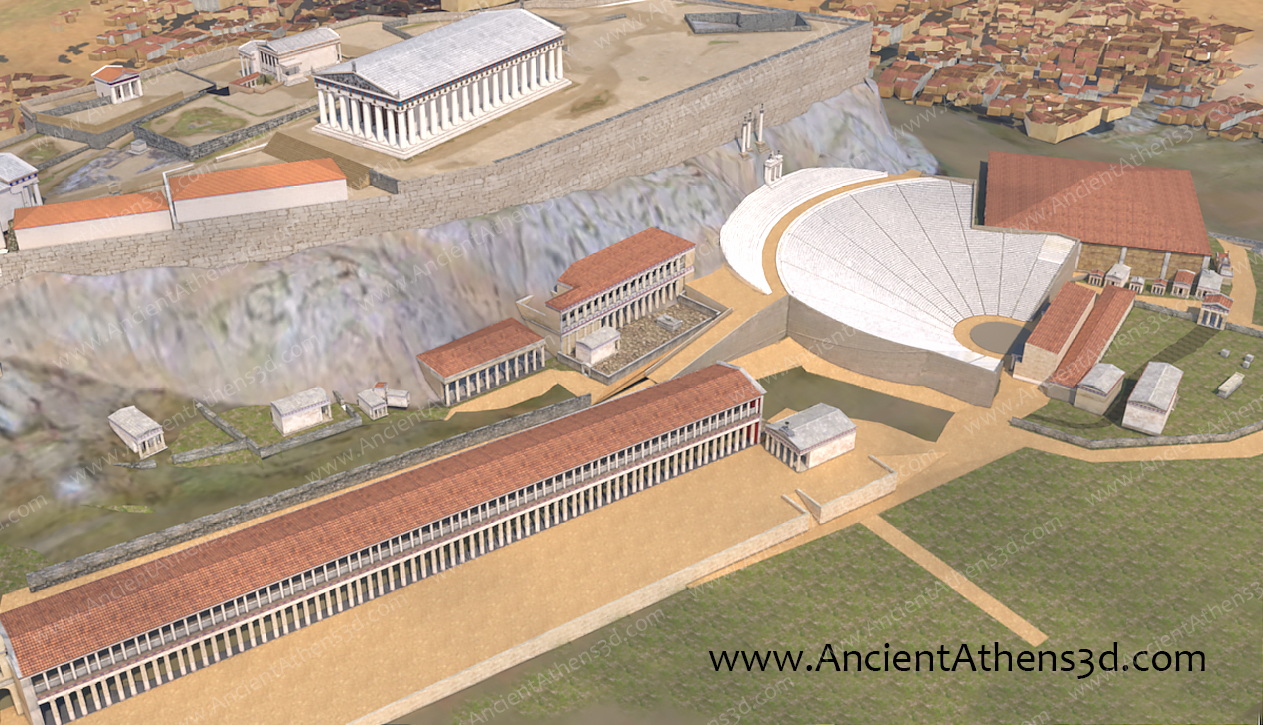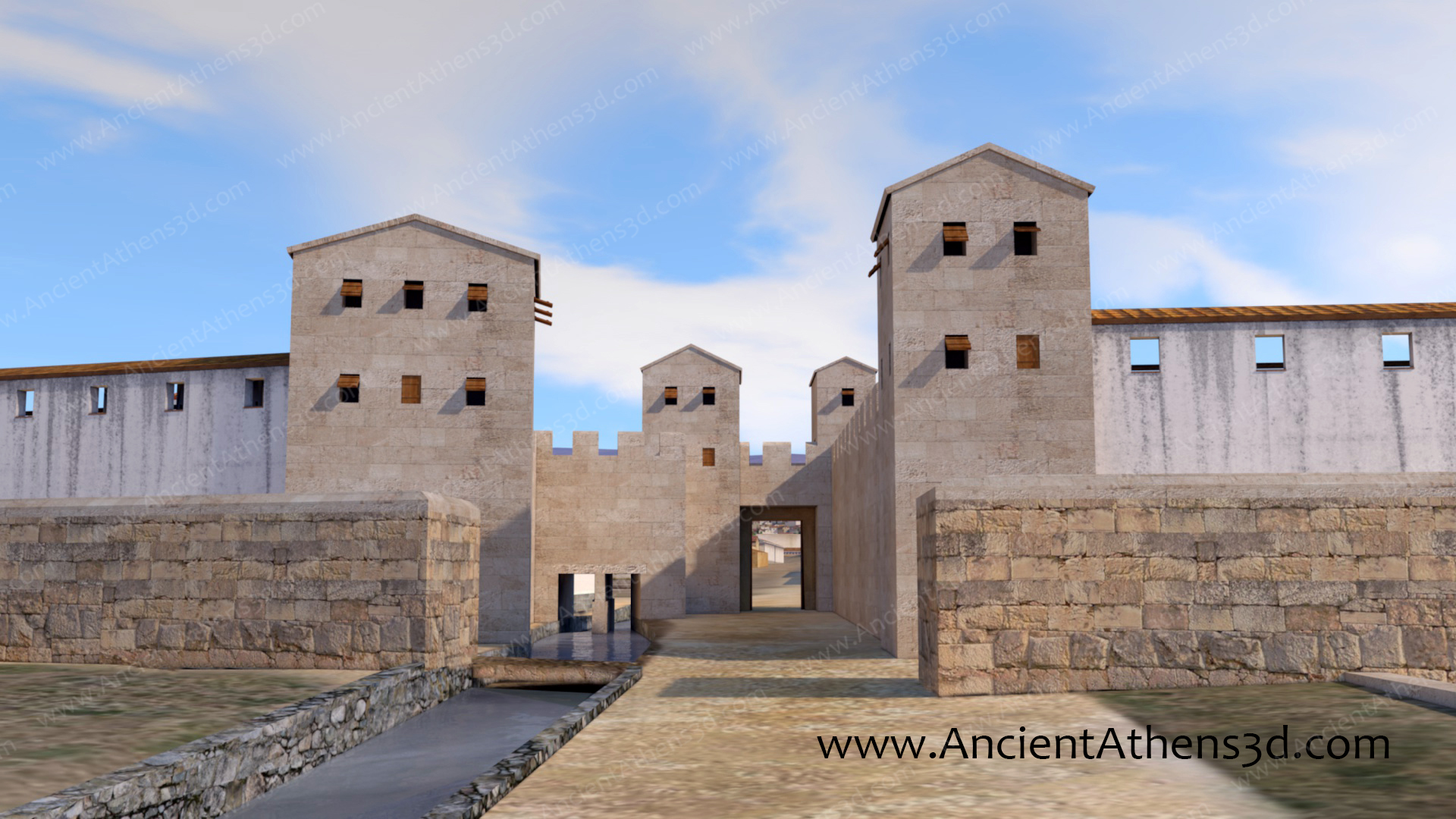The Classical Acropolis of Athens (479-323 BC)
A new grandiose building programme began on the Acropolis during the Classical times. The south side was filled with the ruins of destroyed temples, broken statues, inscriptions and tons of earth in order to flatten the surface. The new Parthenon became the symbol of Athenian power. A new wall was constructed and the entrance was radically redesigned with the new Propylaea. The ruins of the ancient temple of Athena (Archaeos Neos) that had been preserved as a reminder of the Persian wars, were demolished. According to the testimony of Xenophon, they were burned in 405 BC. The Erechtheion took their place. At the same time, various other auxiliary buildings and sanctuaries were built. However, the works on the Acropolis remained unfinished (mainly the Propylaea) with the outbreak of the Peloponnesian War.
The Parthenon (447-438 BC)
The Parthenon was a temple dedicated to Goddess Athena Parthenos (Virgin). The construction begun in 447 BC after the order of Pericles. The architects were Iktinus and Kallikrates. The chief supervisor of the project and especially of the sculptures and the decoration, was the sculptor and Pericles’ friend, Pheidias. The Parthenon is a unique Doric building that successfully incorporates the Ionic order. It is known that in the west room (opisthodomos) was kept all the wealth of the Delian League. Furthermore, the gold and ivory statue of Athena that stood inside the main temple, was covered with the gold of Athens’ allies. This proves that the Parthenon also functioned as the treasury of the Delian League, containing wealth which Athens had misappropriated from the allies.
The Propylaea (437-432 BC)
The construction of Propylaea was assigned to the architect Mnesicles in 437 BC. The original design (symmetry between the north and south side) was never completed due to the Peloponnesian War. The central building of the Propylaea is composed by two parts. The eastern one is a little higher. It is notable that besides the clear Doric impression, six Ionic columns exist in the interior. In front of the south wing is the small Ionic temple of Athena Nike (427/6-424/3 BC). The north wing was occupied by a square building, the Pinakotheke, where according to Pausanias many paintings were on display (including works of the most famous Polygnotos) which today are, unfortunately, lost.
The Erechtheion (421-406 BC)
The Erechtheion was the most sacred place in Athens. In there were worshiped the gods Athena, Poseidon, Hephaestus, and the mythical heroes and kings: Kekrops, Boutis and Erechteus. The whole history of the city could be found in this very place. Traces of the quarrel between Athena and Poseidon in order to become protectors of the city were here. Athena offered the olive tree and Poseidon used his trident to crack the rock from where salty water came out. The “marks” of his trident are still visible. Under the north wing of the building is the hole where the sacred snake of Erichthonius lived. The ancient (even for the time) wooden statue of Athena was kept in one of the rooms. According to the myth and to show its age, the Athenians used to say that it fell from the sky.
The spot where Erechtheion was built was not chosen by chance. It was there that, nearly a thousand years before, the Mycenaean palace with all of its sanctuaries stood. The main characteristic of Erechtheion is the south wing with the woman-shaped columns, the Caryatides. In this place was believed to be the tomb of Kekrops. West of the building was a small stoa dedicated to the nymph Pandrosos, daughter of Kekrops, the Pandroseion.Other buildings






















